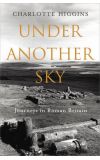
06 Mar 2014 02:18:06
Thomas Arnold, in his inaugural speech as professor of modern history at Oxford in 1841, said that Britain's history began with the Saxons: "The history of Caesar's invasion has no more to do with us, than the natural history of the animals which then inhabited our forests." Jump forward a century and a half, to the announcement that the woman known as "ivory bangle lady", whose body was discovered in York in 1901, was probably of African descent. The research team responsible for this latter discovery felt this would not have been unusual considering the mix of people in the service of the Roman Empire, including its higher echelons; the woman's appearance would have raised few eyebrows in Roman York, or Eboracum. Higgins, in her journey through Roman Britain, quotes some of the replies from the comment thread below the article as reported by the Daily Mail. "More mult-cult propaganda and lies," wrote one man from Dartford; another, from Middlesbrough, observed that "if we were multicultural once, and managed to reverse it, we can do it again." Personally, I would have hesitated about quoting from the comments thread of the Daily Mail in a work of serious history; but such remarks help illustrate the vexed and shifting ideas we have about the ancient Roman presence on the British mainland. There is still an imperial presence here – most visibly around Hadrian's Wall, whose 80 miles I once walked, as a 14-year-old, in three days – but much of it is ambiguous, open to wildly varying interpretations. For example: is the reason more Roman treasure has been dug up here than in France because this was a safe, wealthy country, or one in which people felt the need to bury it in the first place? Higgins tells the story of a tablet discovered in Bath with a faint inscription on it. This, deciphered, appeared to contain a reference not only to Christianity but to the Arian heresy that Christ was not wholly divine, which put the cat among the pigeons for those pondering the extent of Christianity in Roman Britain. However, it turned out that the tablet had been read upside down: it was, in fact, a curse, wishing permanent insomnia on the thief of some unspecified object.
Then again, Under Another Sky is not only a work of serious history, it is more personal than that. Higgins and her partner travel around the country in a disintegrating VW camper van looking for Roman ruins, or evidence of their occupation. She has been compared to WG Sebald, but I think this is because of the black-and-white photographs she has used, which always look melancholy. Higgins's work is not as weighty, or indeed as melancholy, as Sebald's; it is conversational, anecdotal, in a way that makes it easy for her to slip in quite a lot of information. And the impressionistic manner works at another level, too, for it honestly reproduces the way that it is mostly only impressions that we can have of the Romans.
But there is still enough to look out for. Apart from such obvious places as Hadrian's Wall (Higgins reproduces the piano part for Britten's tune to Auden's "Roman Wall Blues"), she also dives into underground car parks in London to see incongruous sections of Roman masonry, or wanders round the long-deserted town of Calleva Atrebatum, or Silchester; and tells many depressing stories of farmers dismantling long-standing structures in order to make barns or build dams.
The great thing about this book is its quiet enthusiasm. Higgins's knowledge is lightly worn, but not so lightly that we're unaware of it, and the effect is to make us want to see these things for ourselves. (There are also places you don't, apparently, need to see. "You can give the Iceni village a miss" in Norwich, says one of the endnotes, which usefully explain where and how to see the artefacts and remains she mentions.) In this she follows in the spirit of the amateur antiquarians, who from roughly the 17th century onwards opened our eyes to the age-old mysteries that litter the land.

